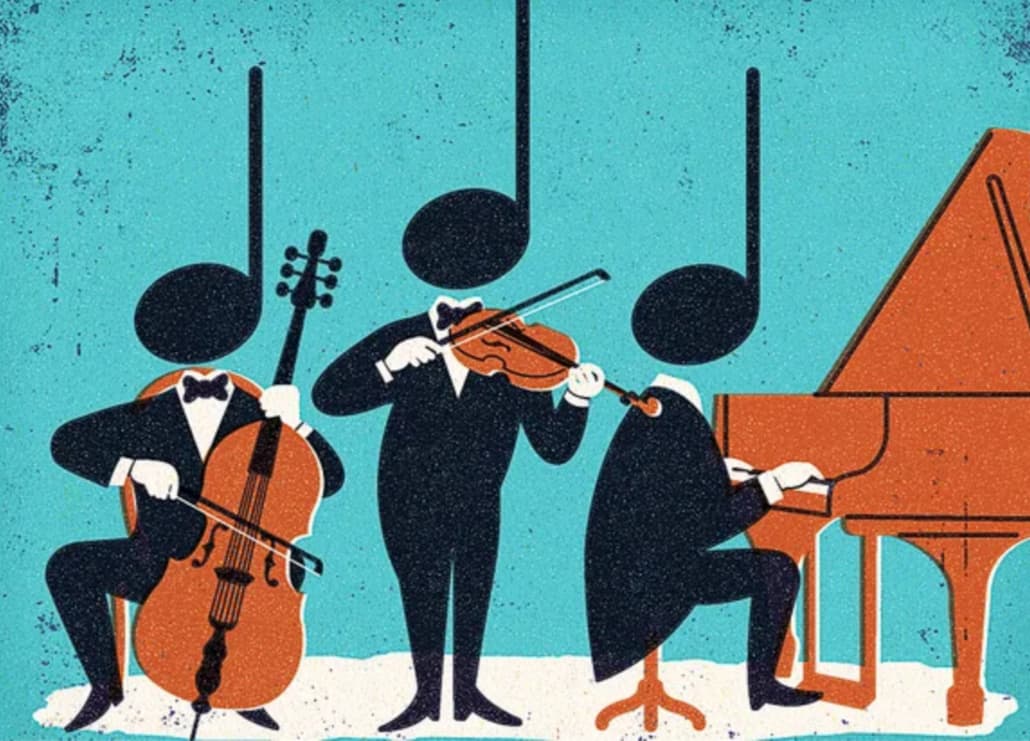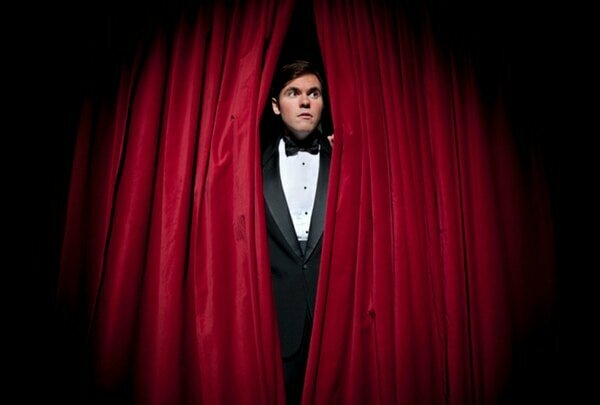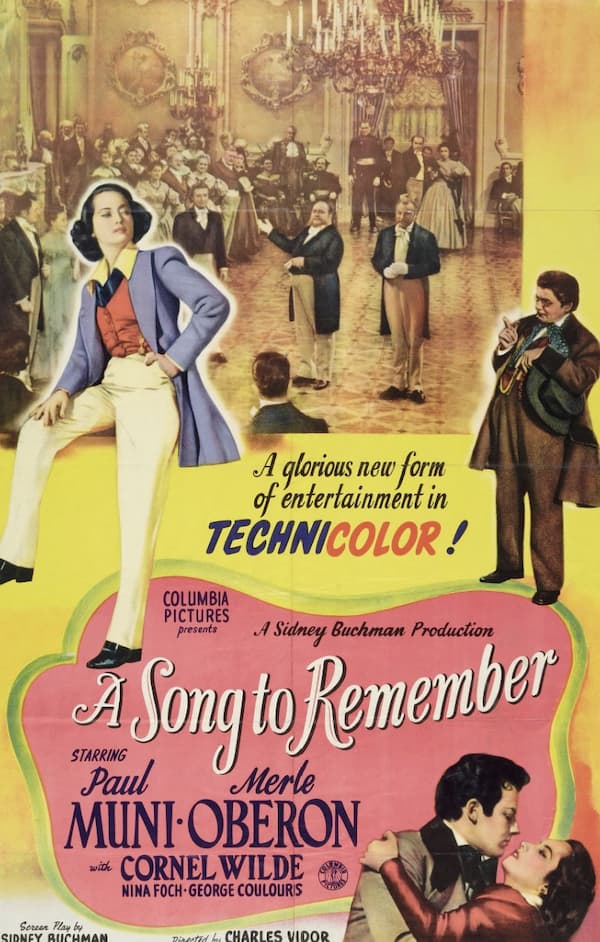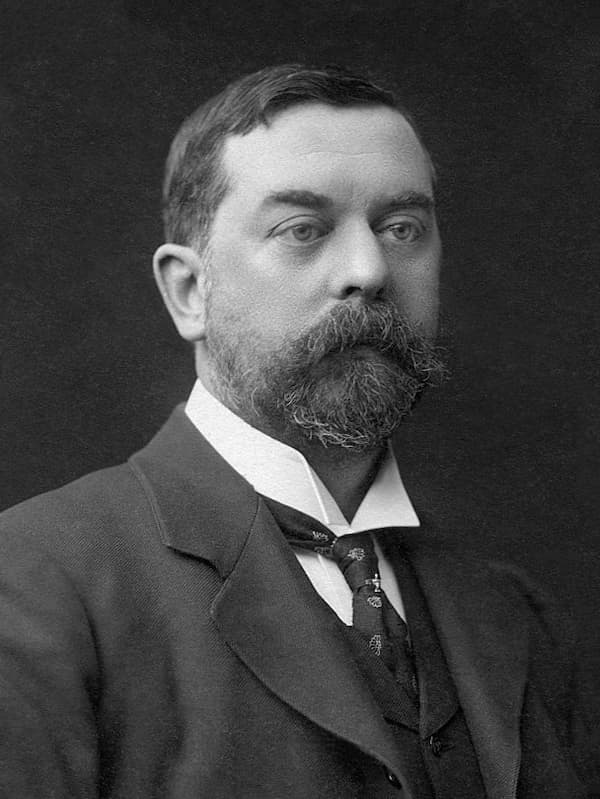A little while ago, I wrote a blog on the 10 most beautiful piano trios and your response was overwhelming. Thank you so much for your encouraging comments, and also for suggesting additional works that should have been included. To me, this seemed like a wonderful invitation to write a follow-up blog that includes some of your wonderful suggestions.

Sergei Rachmaninoff: Trio élégiaque No. 1 in G minor
Well then, let’s get started with Sergei Rachmaninoff (1873-1943), who was asked to provide a chamber work for an upcoming student recital in January 1892. Astonishingly, the composer responded with his first Trio élégiaque within a matter of days. First performed at the end of January 1892 with the composer at the piano, we still have no idea what prompted the 19-year-old to provide a musical funeral oration. Whereas his second Elegiac Trio Op. 9, composed the following year, is factually connected to the death of his idol Pyotr Ilyich Tchaikovsky, this initial effort appears to only conceptually reference this highly popular Eastern European funeral music genre.
Uncharacteristically, the first Elegiac Trio is cast in a single movement featuring a relatively simple formal and structural design. At the centre of this musical oration stands a highly expressive and mournful theme, introduced by the piano, which gradually emerges from a rhythmically agitated background. Highlighting the vocal qualities of the participating string instruments, the theme is repeated verbatim in the cello and violin. Subsequently, the elegiac theme is transformed in spirit as the strings enter into an agitated musical dialogue with the piano, all steadfastly striving for the culminating moment of the work.
Almost predictably, there is a good bit of Tchaikovsky in this single-long movement. However, Rachmaninoff’s melancholy lyricism and colourful harmonic language already indicate a strongly personal musical idiom that readily points to his mature compositional style.
Felix Mendelssohn: Piano Trio No. 1 in D minor, Op. 49
A number of readers were unhappy that I initially left out one of the most popular chamber compositions by Felix Mendelssohn, his Piano Trio No. 1 in D minor. I am now officially remedying this dreadful situation and proudly present one of the most glorious works in the chamber music genre. Mendelssohn completed the work on 23 September 1839, and Robert Schumann glowingly wrote in his review that “Mendelssohn is the Mozart of the 19th century, the most illuminating of musicians.”
Mendelssohn also showed the work to the composer Ferdinand Hiller, and while he was mightily impressed, he found some passages in the piano to be “somewhat old-fashioned.” In fact, Mendelssohn rewrote the entire piano part, making it less conversational in style and much more difficult to play. In the opening “Molto Allegro,” a syncopated piano accompaniment gives rise to a grandly arching melody announced in the cello. Joined by the violin, the music effortlessly transitions to the second subject. Alternating exuberance and gentle elegies, the remainder of the movement unfolds in one continuous breath of melancholy yearning.
A “Song without Words,” performed by the solo piano, initiates the “Andante” movement. Pensive and pondering, the theme is subsequently stated by the violin and accompanied by a tender counterpoint in the cello. The passionate central section steadily grows in intensity before seamlessly returning to the opening theme, this time with pizzicato accompaniment. The light and airy “Scherzo” is reminiscent of Mendelssohn’s best passages from his Midsummer Night’s Overture, with a central section providing a lyrical contrast. Marked “Allegro assai appassionato,” the finale adheres to a basic rondo design, with two cantabile sections pensively encroaching on the piano-dominated refrain.
Clara Schumann: Piano Trio, Op. 17
Clara Wieck-Schumann (1819-1896) confided in her diary, “a woman must not wish to compose—there never was one able to do it. Am I intended to be the one? It would be arrogant to believe that.” Her husband Robert was supportive of Clara’s creative efforts, but his opinion on her role was inflexible. “To have children and a husband,” he writes, “who is always living in the realms of imagination do not go together with composing. She cannot work at it regularly, and I am often disturbed to think how many profound ideas are lost because she cannot work them out. But Clara herself knows her main occupation is a mother, and I believe she is happy in the circumstance and would not want them changed.”
Such attitudes have actively discouraged or even barred women from pursuing careers as composers for a very long time. It forced Clara Schumann, one of the most talented and distinguished composer-pianists of the 19th century into a “struggle for self-assertion and survival amidst competition, personal disappointments, devastating sorrow, and the challenges of managing both family and career.”
Yet despite these obstacles, Clara and other women have persisted in writing music, and their achievements have been hiding in plain sight for centuries. Music by women composers, living or dead, was rarely heard in major concert events. Thankfully, this embarrassing situation is gradually changing, and with the G-minor Piano Trio, Clara Schumann composed a masterpiece in 1846. It is her best-known composition, but sadly, one of only a few multi-movement works in her catalogue.
Théodore Dubois: Piano Trio No. 1 in C minor
Let’s change gears a little and cast our glance towards the Conservatoire de Paris. Among the countless famous personalities who attended this venerable institution, we also find highly talented composers who have long since been forgotten. Among them was Théodore Dubois (1837-1924), who came from a humble family background but had magnificent musical talents. He was awarded the prestigious “Prix de Rome” in 1861 and subsequently took on teaching roles and the position of director of his alma mater.
You might recognise Dubois’ name in a slightly different context. He was at the helm of the Conservatory when Maurice Ravel was denied the “Prix the Rome” for a record-breaking five consecutive years. The press was predictably hostile and wrote, “we must know, if, for now and all time, awards are to be extorted by intrigue or conferred by imbeciles…” Dubois was forced to resign, and he complained bitterly about the entire musical world gradually forgetting him.
As a composer, Dubois had been reasonably busy, and much of his instrumental music was stimulated by his involvement with the “Société Nationale de Musique,” an organization that actively promoted French music. His delightful Piano Trio No. 1 in C minor was written in 1904, at the height of the Ravel turbulence. We find not a trace of anguish or nervousness in the musical score, with a slight sense of restlessness combined with extended lyricism in the first movement. The third movement is pure musical elegance, and the slow introduction to the fourth movement gives way to a fugal-style finale.
Johannes Brahms: Piano Trio No. 1 in B major, Op. 8
The ink had barely dried on his Trio in B major for piano, violin and cello, opus 8, when Johannes Brahms started to voice some reservations. When it was accepted for publication by Breitkopf und Härtel in June 1854, Brahms told his friend and mentor Joseph Joachim that he would gladly have held on to it in order to make alterations at a later date. Brahms kept making slight alterations during subsequent performances, however, when Breitkopf sold the rights of the work to Fritz Simrock, Brahms saw an opportunity to make thorough revisions.
As he writes to Clara Schumann, “You cannot imagine how I trifled away the lovely summer. I have rewritten my B major Trio and can now call it Op 108 instead of Op 8. It will not be so dreary as before—but will it be better?” So, Brahms took something that he had first composed at the age of 21 and now started to tamper with it at the age of 56. The first thing that Brahms did was not to change the gorgeous lyric melody that the piano alone sings in its mellow alto register to begin the trio.
One of his most beautiful melodies ever written, Brahms allowed it to remain intact, but he contrasted it with a brand-new second theme of motivic terseness and rhythmic vitality. What a fascinating movement as Brahms combines the warm lyricism of his youth with the constructive muscularity of his late musical style. Brahms left the early “Scherzo” intact but added a beautiful cello line midway through the “Adagio” to create soulful musical poetry. Brahms retains the opening of the minor-key finale but adds a major-key second theme before eventually returning to the dedicated energy of his youth.
Pyotr Ilyich Tchaikovsky: Piano Trio in A minor, Op. 50
This might come as a surprise, but Tchaikovsky only wrote a single work for the combination of piano, violin, and cello. His benefactress Nadezhda von Meck, had asked for such a piece, but the composer refused. As he writes, “You ask why I have never written a trio. Forgive me, dear friend; I would do anything to give you pleasure, but this is beyond me… I simply cannot endure the combination of piano with violin or cello. To my mind, the timbre of these instruments will not blend … it is torture for me to have to listen to a string trio or a sonata of any kind for piano and strings.”
One year later, Tchaikovsky found himself in Rome and he gradually warmed up to the idea of writing a piano trio. As he wrote, “In spite of my antipathy, I am thinking of experimenting with this sort of music… I have already written the start of a trio, whether I shall finish it and whether it will come out successfully, I do not know.”
By 25 January 1882, the work was completed. Tchaikovsky writes, “the Trio is finished… now I can say with some conviction that my work is not all bad.” Although the work is scored for only two movements, it still takes the better part of 45 minutes to perform. The opening “Pezzo elegiaco” presents several themes of symphonic proportions, while the second movement sounds a number of variations on a theme by Nikolai Rubinstein, to whom the work is dedicated.
César Franck: Piano Trio No. 1 in F-sharp minor, Op. 1, No. 1
When César Franck first introduced his piano trios to the Parisian public, a critic venomously wrote, “These works try the patience of French audiences who, despite their proverbial courtesy, desert in the face of the immeasurable boredom of these trios.” Franck started work on his First Piano Trio in f sharp minor while still studying at the Paris Conservatory. It marked his official debut as a composer and was first published in 1843.
Franck’s Op. 1 actually contains three trios, and the inspiration originated with a concert series organised by Franz Liszt in the Salons Érard featuring a number of Beethoven piano trios. A critic at these concerts pointed out that the piano trio “is the most perfect of all compositions because it is the one that produces the greatest effect in proportion to the means employed.”
The Trio Op. 1, No. 1, with its formal originality and monumental architecture, made a profound impression on composers. Vincent d’Indy later wrote a detailed analysis finding “two main cyclic themes.” The opening “Andante” flows gently like a sluggish river, with the emotional temperature gradually rising towards an explosive climax. We can hear plenty of nervous scherzo energy in the “Allegro molto,” while the concluding “Allegro Maestoso” explodes with powerful chords that give way to occasional intimate delicacy. As d’Indy remarked, “Everything in Franck sings, and sings all the time.”
Johann Nepomuk Hummel: Piano Trio in F Major, Op. 22
A student of Mozart and Haydn, Johann Nepomuk Hummel was considered to be one of Europe’s greatest composers and pianists. Hummel had a slightly awkward relationship with Beethoven, but he was nevertheless greatly influenced. The Hummel piano trios were composed during the Revolution and the Napoleonic Wars, with great upheaval reverberating throughout the continent.
Hummel’s piano trios are characterised by their richness of sonority, good humour and flowing melodic inventiveness. They certainly exude the atmosphere at the turn of the 19th century Vienna while sounding his taste for experimentation. Critics write that Hummel was not a profound composer, but he certainly wrote delightful, intelligent, witty and very attractive music. Essentially, the Hummel Trios are written in the classical Viennese style but offer wonderful glimpses into the world of romantic drama and passion.
The sheer number of works written in the piano trio genre is truly incredible. It is like a vast universe of music drawing you in for further explorations. And that’s exactly what I shall do. Please watch out for one more blog featuring piano trios by Smetana, Korngold, Rubinstein, Alkan, Chopin, Bruch and others.
For more of the best in classical music, sign up for our E-Newsletter



